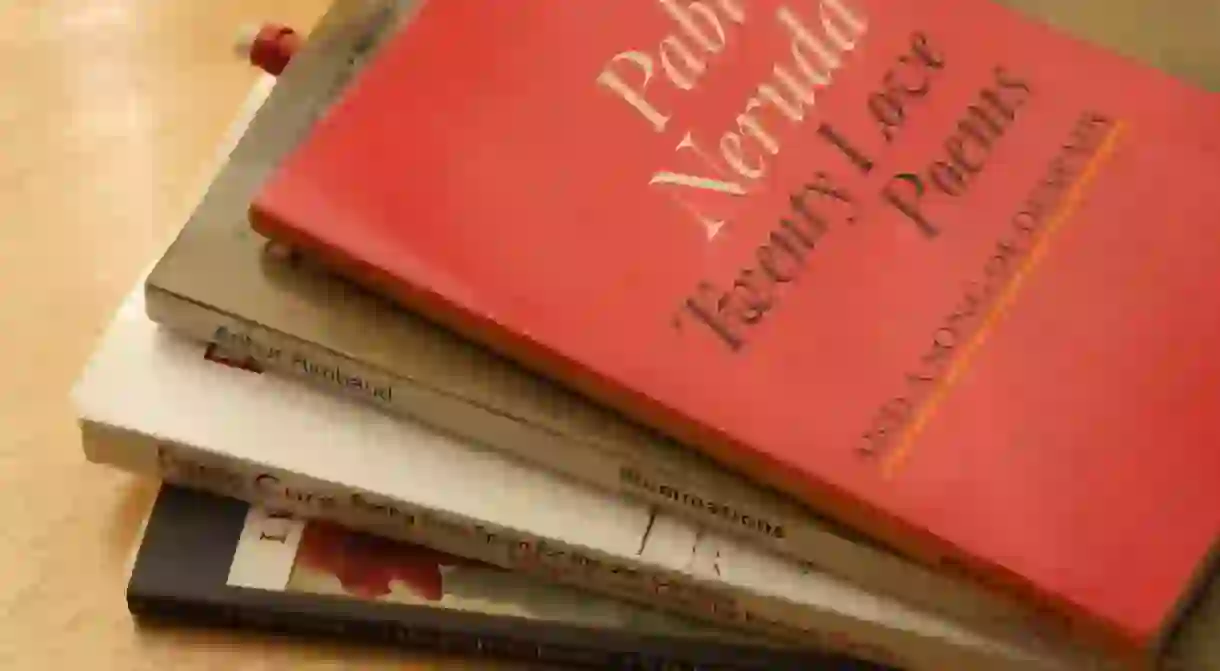7 Poems That Provide the Perfect Introduction to Latin America

Latin American poetry began to draw the international spotlight in the 1960s, when a host of unique voices redefined the literary landscape. But there were great Latin American poets long before that decade, and we highly recommend that visitors to the region explore both the “literary boom” poetry and that which went both before and after. With that in mind, here are seven poems from a range of periods that will give you a fascinating introduction to Latin American culture.
“You Foolish Men Who Accuse,” by Sor Juana Inés de la Cruz
A nun who lived during Mexico’s colonial period, Sor Juana Inés de la Cruz was a prolific poet, essayist, and playwright. A lifelong champion of women’s rights and education, she is still celebrated today as a proto-feminist icon. Since her poetry rose from the ashes of church condemnation, she is often referred to as the “Mexican Phoenix.” An extract from one of her most famous poems, “Hombres necios que acusáis” (“You Foolish Men Who Accuse”) even appears in tiny print on the face of the Mexican 200-peso note.
You foolish men who lay
The guilt on women,
Not seeing you’re the cause
Of the very thing you blame

“The Ten Commandments of the Artist,” by Gabriela Mistral
Chilean poet Gabriela Mistral won the Nobel Prize in Literature in 1945, becoming the first Latin American to do so. Her biographers have highlighted a close friendship she formed with a railway worker as a key episode in her life. His suicide in 1909 apparently marked her life and work. She never married, and loss and solitude became defining themes in her poetry. “Decálogo del artista” (“The Ten Commandments of the Artist”) is one of her most celebrated poems and outlines her poetic vision of the universe.
“The Heights of Machu Picchu,” by Pablo Neruda
A student of Gabriela Mistral, Pablo Neruda was regarded by Colombian novelist Gabriel García Márquez as “the greatest poet of the 20th century in any language.” Neruda’s Canto General was his 10th book of poems and took him more than 12 years to write. The collection offers a sweeping history of the New World, from pre-Hispanic times to the present. Inspired by Neruda’s journey to the ancient ruins, “Las Alturas de Machu Picchu” (“The Heights of Machu Picchu”) is widely regarded as Neruda’s masterpiece.

“Sunstone,” by Octavio Paz
Awarded the Nobel Prize for literature in 1990, the poet and essayist Octavio Paz is still one of the region’s most celebrated literary figures. Paz’s lengthy, surrealist vision “Piedra de Sol” (“Sunstone”) is widely regarded as his greatest work. The poem addresses timeless themes such as eroticism and death and makes specific references to Mexican culture and the Spanish Civil War. Its unusual circular structure mimics the Aztec calendar, or sunstone, that is referred to by the title.
“The Cage,” by Alejandra Pizarnik
Argentine poet Alejandra Pizarnik was born to Jewish immigrant parents in Buenos Aires. She struggled with clinical depression and an amphetamine addiction for her entire adult life. Her poetry, much like that of Sylvia Plath, was hauntingly dark and powerful. Pizarnik took her own life in 1972, at the age of 36. She left behind an extensive body of poetic work, which was often deeply surrealist but also intimately confessional. “La Jaula” (“The Cage”) is one of her best-known poems. Published in her 1958 collection Las aventuras perdidas (The Lost Adventures), the poem is famed for its disturbing closing lines:
Outside there is sun,
I am dressed in ashes.

“Guadalupe, W. I., Pointe-à-Pitre,” by Nicolás Guillén
The Cuban poet Nicolás Guillén is noted for incorporating his poetry with the rhythmic sounds of son cubano, a musical genre that fuses elements of Spanish and African origin. As a communist sympathizer, he was exiled from Cuba in 1953 and only returned when Fidel Castro invited him back after the Cuban Revolution of 1959. A lifelong champion of social justice, Guillén came to be regarded as Cuba’s national poet. His short poem “Guadalupe, W. I., Pointe-à-Pitre,” is set on the Caribbean island of Guadeloupe and powerfully highlights the class divisions that define island life.
“Prayer for Marilyn Monroe,” by Ernesto Cardenal
The Nicaraguan former Catholic priest and social activist Ernesto Cardenal is closely associated with liberation theology, a left-wing political movement that emerged in the 1970s and sought to blend socialist ideology with Catholic teachings. In the 1960s, after his ordination, Cardenal founded an artistic community on the Solentiname Islands that still exists today. Despite his political convictions and years of activism, Cardenal’s most famous poem, “Prayer for Marilyn Monroe,” was written after the death of the Hollywood star and reflects on the social conditions that may have contributed to her untimely demise.














